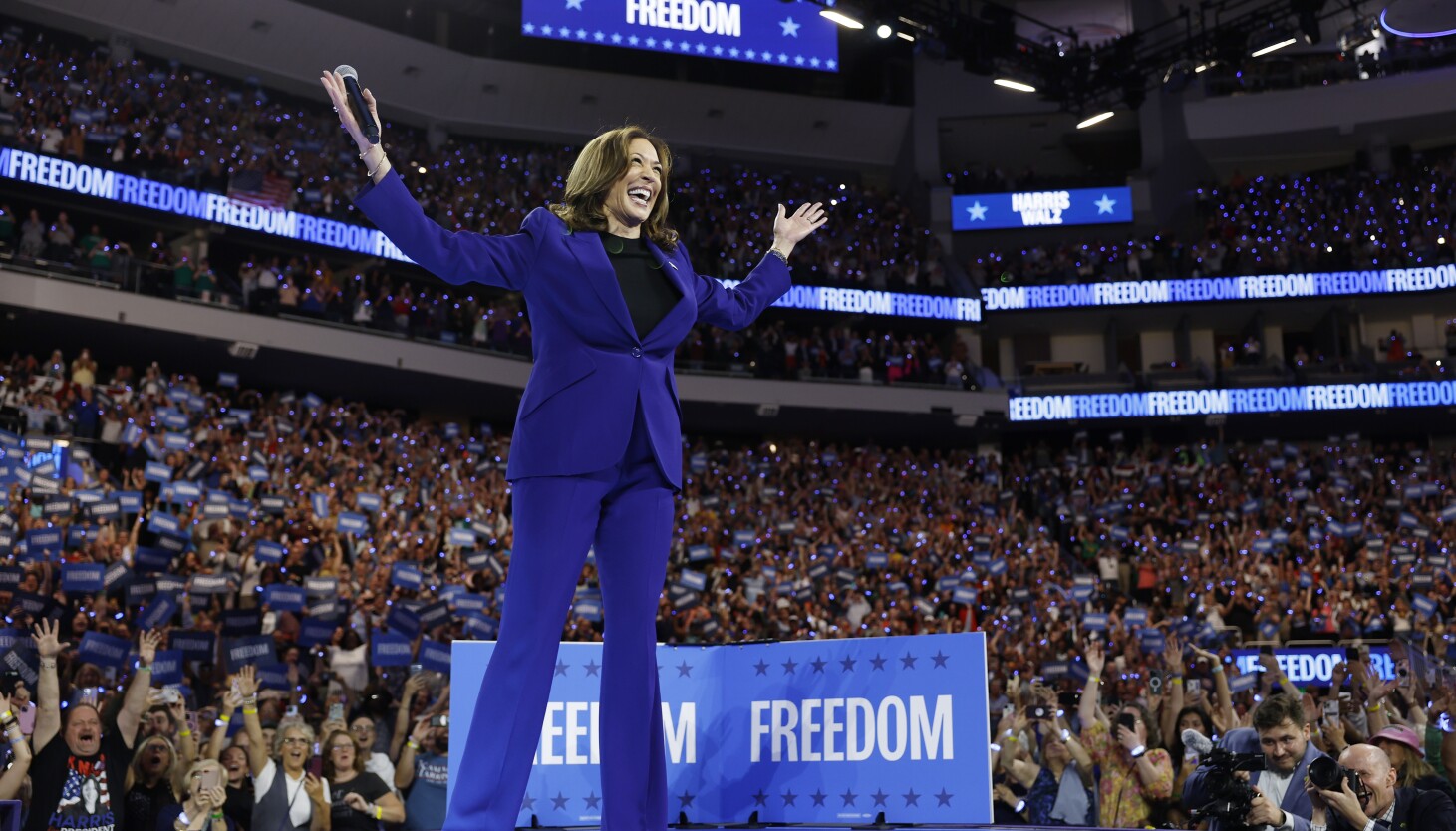A DEI hire. Dumb as a rock. Never passed the bar exam.
These are just a few of the attacks from Donald Trump and his surrogates after Joe Biden’s exit from the presidential race paved the way for Vice President Kamala Harris to become our country’s first Black female candidate.
Despite GOP leaders urging their colleagues to stop commenting on Harris’ race, Trump’s running mate, Sen. JD Vance, recently joined in, reducing the public service career of the former California attorney general and U.S. senator to that of a freeloader who had been “collecting a government check for the past 20 years.”
Since 2008, when Trump famously questioned President Barack Obama’s citizenship, right-wing politicians and activists have leaned into racially loaded attacks against their opponents, Democrats or otherwise.
When campaigning last year, Trump rehashed birtherism claims to attack his chief rival in the Republican presidential primary, former South Carolina Gov. Nikki Haley, who is Indian American.
While pundits on the left have rightly described these race-based calumnies as part of the Trump campaign’s now all-too-familiar playbook, they predate him by more than a century.
Demonizing minorities
At the dawn of the 20th century, racial minorities entering the middle class through employment in an expanding public sector were regularly demonized, popularly associated with crime, graft and even sexual danger for white women.
In Gilded Age Atlanta, where racist labor practices limited African Americans’ employment prospects, the 1883 Pendleton Act offered college-educated Black men employment opportunities with the U.S. Postal Service as mail carriers and postal clerks. The stability and prestige of federal employment made these men pillars of an emerging Black middle class. Yet white Atlantans began circulating stories about “ignorant” Blacks being given preference over “qualified” white men for postal service jobs which, they alleged, resulted in widespread mail theft.
In the months leading up to Atlanta’s 1906 race riot, white men verbally or even physically assaulted Black mail carriers on the street or on public transport, alleging they failed to show whites proper deference.
In San Francisco, Chinese American men’s limited employment in the evolving federal immigration apparatus created to enforce the 1882 Chinese Exclusion Act provoked similar outrage. A culture of corruption among the overwhelmingly white corps of agents in the “Chinese Bureau” was attributed to the presence of those of Chinese origin and led to a ban on “anyone having Chinese ancestry being employed in or around” the agency.
Local newspapers enhanced the perception, erroneously claiming that “dozens” of eligible white men seeking interpreter jobs were being “passed over” to hire Chinese men.
A similar story unfolded in 1880s San Antonio, where Tejano men recruited into the city’s new police force were initially lauded as crime fighting heroes in the Anglo press, which portrayed them as distinct from the dangerous and racially ambiguous “Mexicans.”
But within a decade, new streams of Mexican immigration into the city reinvigorated stereotypes of Mexicans as an urban criminal element, one that increasingly included Tejano policemen who were portrayed as corrupt or violent.
An 1894 editorial in a nationally circulated magazine ignored Tejano policemen completely, describing the “Mexican-Texan” population as dishonest and “below average in matters of citizenship.”
A changing middle class
Now, as a century ago, the political bullhorn casts a familiar wail, relentlessly interpreting the shifting demographics of the nation’s middle class as a danger to the whites who have “rightly” occupied it.
Today’s moral panics about race and social mobility have moved onto the national scene with new narrative tropes about “white replacement,” “unfair advantages” for racial minorities and the alleged dangers of Critical Race Theory to schoolchildren.
They give rise to political extremism among those who fear their privileged social position within the nation is eroding.
British sociologist Les Back has linked popular narratives about being “swamped” by newcomers, claims of “unfairness” and the “perfidy” of outsiders to “old and familiar themes” of middle-class racism that emerge in periods of social upheaval and economic uncertainty.
Research on the contemporary middle class reveals a more race-plural group emerging over the last 40 years, with more Black, Asian and Latin families among the nation’s middle-income households. Additionally, a recent study by Opportunity Insights indicates that over the past 15 years, the Black-white racial wealth gap has narrowed considerably.
Analyses of the 2016 election revealed that despite claims of appealing to the working classes, the bulk of the former president’s supporters came from the middle- and upper-middle classes — the latter being one class segment that has remained overwhelmingly white.
Exploiting racial divisions within the middle class brings real dangers to the American political future. We must recognize the deep historical roots of race-class narratives that encourage fears about upward mobility and the real political aims of the demagogues who weaponize them.
Joseph O. Jewell is a professor and head of the Department of Black Studies at the University of Illinois Chicago.
The views and opinions expressed by contributors are their own and do not necessarily reflect those of the Chicago Sun-Times or any of its affiliates.
The Sun-Times welcomes letters to the editor and op-eds. See our guidelines.
Get Opinions content delivered to your inbox.
